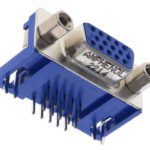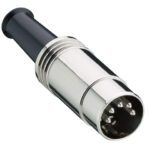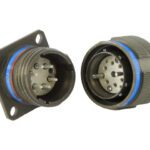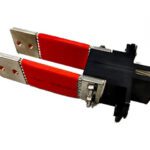What are MIL-C-5015/SAE-AS50151 connectors?
Meet the Connector: MIL-C-5015/SAE-AS50151 Connectors
With nearly a century of service in harsh environment equipment, this connector family has proven performance in military and other rugged electronics.
MIL-C-5015 connectors, now formally known as SAE-AS50151, are heavy-duty, medium-density circular electrical connectors with soldered or crimped contacts. This military standard product family is used for digital and electrical connections in military, aerospace, industrial, rail, and other heavy-duty equipment. It is reliable, durable, inexpensive, and widely available from multiple manufacturers.
The MIL-C-5015 connector dates back to the 1930s, when the Douglas Aircraft Company asked Cannon (now ITT Cannon) to create a connector for its DC aircraft platforms. This led to the development of the AN9534 standard in 1939, which subsequently evolved into the MIL-DTL-5015 in 1949. The standard underwent revisions in 1958, 1971, 1976, and 1994. The 2000s brought further refinements, with MIL-DTL-5015H coming out in 2000 and an industry-wide change to SAE-AS50151 following in 2009. While the military standard name known as MIL-DTL-5015 is no longer in use, the family of connectors continues to be called MIL-DTL-5015 or MIL-C-5015 by many manufacturers and users.
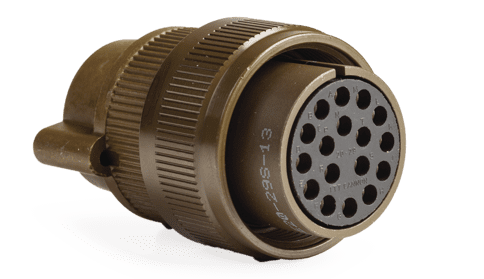
Cannon’s CA Threaded / MIL-DTL-5015 (E, R &F) connectors are a modern iteration of the original connector the company developed for commercial aviation in the 1930s.
The MIL-C-5015/SAE-AS50151 connector is favored for its easy handling and is suitable for connections and disconnections under field conditions. The connector offers resistance to vibration and mechanical shock due to anti-decoupling springs and rugged construction, including an interlock and captive nut to prevent inadvertent disassembly. It is available with a wide variety of contact inserts. Four distinct series are available, with 14 classes (A-W) to specify products for specific operation environments and unique conditions.
Series I: Solder contact connectors (SAE-AS31001B)
Series II: Front release, crimp contact connectors (SAE-AS39029/44D)
Series III: Rear release, crimp contact connectors (SAE-AS39029/29C)
Series IV: Connector accessories (SAE-AS85049/31B)
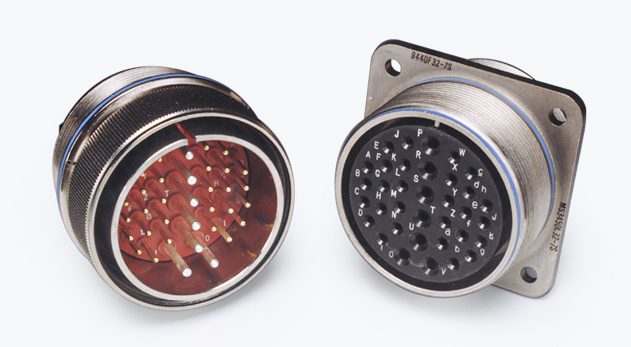
Amphenol Aerospace’s crimp, rear-release high-power series bridges the gap between the older MIL-C-5015 solder type and provides the environmental and high-performance needs of current technologies.
Design Notes
Standardization: Frequently called by its historic designator, MIL-C-5015, this circular connector is now known as SAE-AS50151.
- Compatibility: Compatible with different types and numbers of contacts; power and signal lines can be included in one connector
- Voltage: Up to 225 A for Series I
- Materials: stainless steel, aluminum, zinc, black nickel zinc, Durmalon
- Temperature Range: –55 °C to 200 °C
- Shell styles: 19 options are available, with straight, right angle, wall receptacle, box receptacle, and cable plug configurations
- Mating Style: Threaded or bayonet coupling
- Mating Cycles: 100 minimum
- Contact arrangements: Hundreds of different configurations are available.
Markets, Sectors, and Applications
Military and Aerospace, Industrial, Transportation
MIL-DTL-5015 connectors are used for rugged and harsh environment military applications such as communications, aircraft, and ground vehicles. They also serve civil aerospace and rail applications, and industrial equipment such as petrochemical, mining, earthmoving, telecommunication, saltwater, and other heavy-duty applications.
Suppliers
Amphenol Aerospace, Amphenol Industrial, ITT Cannon, Hermetic Seal, Sealtron, TE Connectivity, Conesys, and Glenair. MIL-DTL approved 5015 connectors are also available through these government approved value added distributors, Arrow, Avnet, PEI-Genesis, Powell Electronics, and TTI Inc.
Related products:
Subscribe to our weekly e-newsletters, follow us on LinkedIn, Twitter, and Facebook, and check out our eBook archives for more applicable, expert-informed connectivity content.
- Where in the World is Amphenol LTW’s Luc Kan? - April 23, 2024
- TE Connectivity’s Sustainability Efforts Pay Off - April 23, 2024
- What is a VGA Connector? - April 23, 2024
